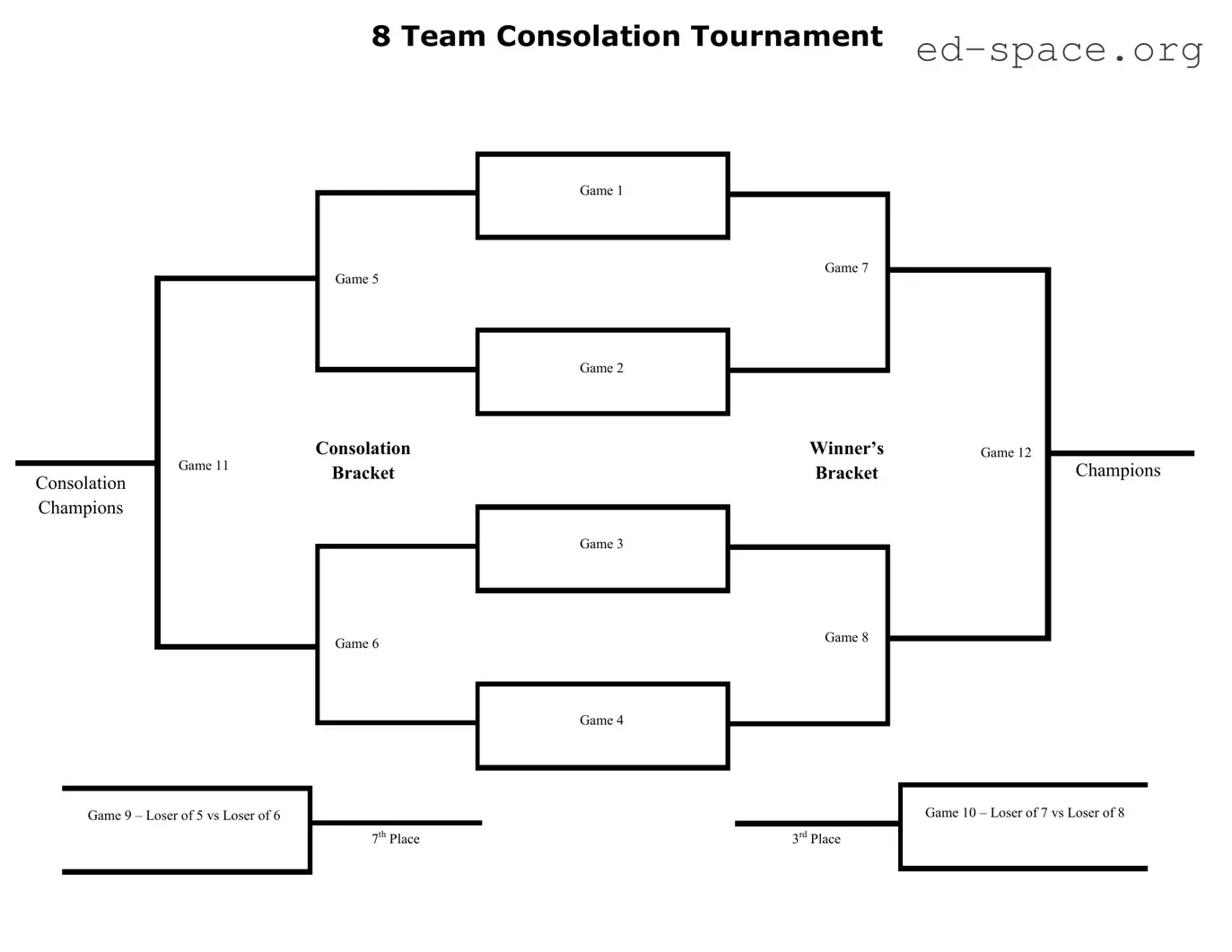What is a Tournament Consolation Bracket?
A Tournament Consolation Bracket is a structure used in tournaments to give teams that lose in the early rounds a chance to continue playing. Instead of being eliminated after their first loss, teams move to the consolation bracket where they compete for positions below the top spot, such as 3rd place, 7th place, and so on. This format ensures more games for all teams and helps determine a more comprehensive ranking beyond just the champions.
How does the 8 Team Consolation Tournament work?
In an 8 Team Consolation Tournament, the process begins with eight teams divided into initial matches (Games 1-4). The losers of these games move to the consolation bracket, starting their journey for the Consolation Champion title with Games 9 and 10, which are contested by the losers of Games 5 and 6, and Games 7 and 8, respectively. This path provides teams a second chance at glory, with the final positions in the consolation bracket ranging from 3rd to 7th place, based on their progression and victories in these subsequent matches.
How is the Consolation Champion determined?
The Consolation Champion is determined through a series of games within the consolation bracket. Following initial losses, teams vie in Games 9 and 10 based on their performance in the consolation winner’s bracket. The winners of these games advance to Game 11. The team that triumphs in Game 11 is crowned the Consolation Champions, claiming the top position in the consolation bracket, showcasing their resilience and skill beyond their initial setback in the tournament.
What happens to teams that lose in the Consolation Bracket?
Teams that lose in the Consolation Bracket may have additional games to determine their final ranking within the tournament, such as for 7th or 3rd place, depending on which round they are eliminated. For example, the losers of Games 9 and 10 might play a game to determine the 7th place, ensuring that every team has a fair chance to play multiple games and secure a ranking in the tournament, regardless of early losses.
Why participate in a Consolation Bracket?
Participating in a Consolation Bracket offers several benefits. It provides teams with more game experience, allowing players to develop skills and team cohesion. It also ensures that all teams, regardless of an early loss, have a chance to compete for a title beyond the main championship. This can be particularly motivating for teams, as it gives them objectives to aim for, even if the top prize is no longer attainable. Moreover, it adds an element of excitement to tournaments, keeping more teams engaged and involved until the end.

